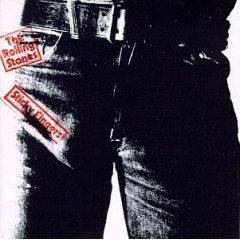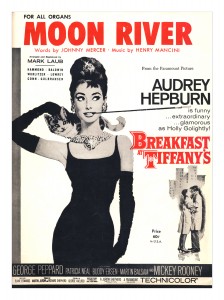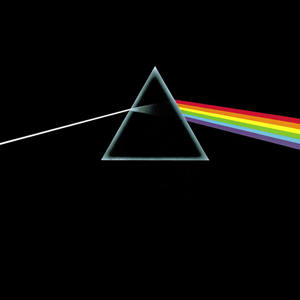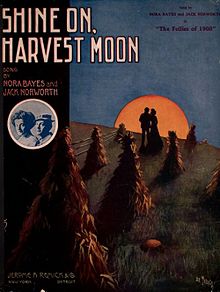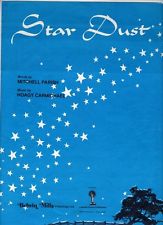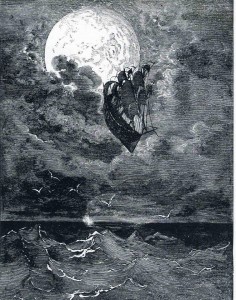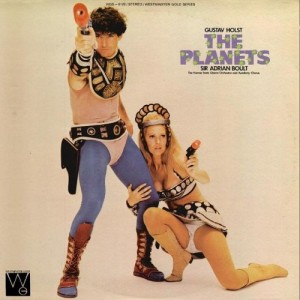Astronomical Songs
Songs with Astronomical Themes No. 14: “Champagne Supernova,” by Oasis
I’m still sulking about the whole Comet ISON thing. Don’t even talk to me about ISON.
To help us get over that disappointment, here’s another favorite song with an astronomical theme, Oasis’s seven-minute-long, “Champagne Supernova,” from 1996. I know I’ve posted this before, but I figure no one’s keeping track.
Break out your tie-dye and enjoy.
Songs with Astronomical Themes No. 12: “Moon River”
This might be a stretch, but No. 12 in our songs with astronomical themes is “Moon River.” Composed by Henry Mancini with lyrics by Johnny Mercer, it won an Academy Award for Best Original Song in the 1961 movie “Breakfast at Tiffany’s,” and then a Grammy in 1962.
It was specially written for Audrey Hepburn to sing in “Breakfast at Tiffany’s,” but the song went on to be recorded by many other artists, including Andy Williams, Frank Sinatra, Barbara Streisand, Louis Armstrong, The Three Tenors, Dr. John, and R.E.M.
Here’s Audrey Hepburn, as Holly Golightly, singing it with guitar while George Peppard, as Fred, looks on.
Songs with Astronomical Themes No. 11: “The Coming of Kohoutek,” by Pink Floyd
Today in our Songs with Astronomical Themes series, No. 11: “The Coming of Kohoutek,” by Pink Floyd.
Fans of the band may be surprised to learn about an early Pink Floyd bootleg album known as “In Celebration of the Comet: The Coming of Kohoutek.” It’s a 1972 live recording of a new batch of songs and instrumentals the band was rehearsing. A couple of months later, Pink Floyd went into Abbey Road Studios and recorded what would become one of the best-selling albums of all time.
Fortunately for everyone, they didn’t use the name of the bootleg album, “The Coming of Kohoutek.” Instead, they called their album “The Dark Side of the Moon.”
Here’s the whole album. If you have 45 minutes to spare, you could turn out all the lights, spark up some incense, and have a listen.
Songs with Astronomical Themes No. 10: “Harvest Moon”
Today in honor of the harvest moon, No. 10 in our Songs with Astronomical Themes series is, of course, “Harvest Moon.”
What’s a harvest moon, you ask?
A harvest moon is a full moon occurring closest to the autumnal equinox, when night and day are equal length, usually in late September. Because it rises soon after sunset, the moon gives farmers extra light for harvesting.
This first song is a rendition of “Shine On, Harvest Moon” (1908), recorded by Milton Brown and his Musical Brownies in 1935:
And here’s one you might be more familiar with, Neil Young’s terrific “Harvest Moon,” from 1992. In fact, you should probably skip that first one and just listen to this:
Songs with Astronomical Themes No. 9: Stardust, by Hoagy Carmichael
It’s been called one of the greatest songs ever written: No. 9 in our Songs with Astronomical Themes series, “Stardust,” by Hoagy Carmichael.
The song, written by Carmichael in 1927 with lyrics added a couple of years later by Mitchell Parish, is one of the most-recorded pop numbers in history, covered by a who’s who of bands and singers: Louis Armstrong, Dave Brubeck, Django Reinhardt, Tommy Dorsey, Glenn Miller, Frank Sinatra, Doris Day, Nat King Cole, Mel Torme, Ella Fitzgerald, Harry Connick Jr., Barry Manilow, Willie Nelson, Rod Stewart . . .
Here’s Nat King Cole’s version, originally recorded in 1956:
The structure and melody are unusually complex for a pop standard; the tune wanders all over the place, with the phrasing alternating between slow and fast. Carmichael says the inspiration for the song came to him one night on the grounds of his alma mater, Indiana University in Bloomington; he dashed off to find a piano and jot down the tune, and thus was born “Stardust.” If you go to IU today, you can see a plaque commemorating the very spot where Carmichael is said to have dreamed up the tune.
Carmichael, by the way, also wrote the tune to “Heart and Soul,” that annoying little ditty that’s often played as a duet by kids sitting at a piano. This one:
Songs with Astronomical Themes No. 8: “Sail to the Moon,” by Radiohead
No. 8 in our Songs with Astronomical Themes: Radiohead’s lovely “Sail to the Moon,” from their 2003 album “Hail to the Thief.”
(Illustration by Gustave Dore, “A Voyage to the Moon,” for, I think, Theophile Gautier’s French edition of “The Adventures of Baron Munchausen,” 1868).
Wiki tells me that “Sail to the Moon (Brush the Cobwebs out of the Sky)” was written by Thom Yorke of Radiohead for his infant son, Noah. The title of the album, “Hail to the Thief,” refers to the 2000 US election stolen by President (cough) George W. Bush.
Here it is, though not with any kind of official video:
Songs with Astronomical Themes No. 7: “The Planets” by Gustav Holst
No. 7 in our Songs with Astronomical Themes isn’t a song but an orchestral suite, “The Planets,” by composer Gustav Holst (1874-1934). This selection is the seventh and last movement, “Neptune, the Mystic.”
Here’s a picture of Gustav:
Despite his name, he was an Englishman. He came from a very musical family; his great-grandfather, grandfather, father, and wife were all musicians.
(Gustav’s brother Emil, however, moved to America, changed his name to Earnest Cossart, and became an actor. He appeared often as a butler in Hollywood films of the 30s. In 1942, Earnest acted alongside Ronald Reagan in “Kings Row,” the film in which Reagan’s character wakes up from surgery to find both his legs amputated and cries, “Where’s the rest of me?!”–a line that Reagan later used as the title of his autobiography.)
Okay, back to Gustav. As a boy he suffered from asthma, poor eyesight, and neuritis in his arms that made playing the piano difficult for him. His mother introduced him to Theosophy, which is how he became interested in mysticism, Eastern religions, and astrology.
In college he studied Sanskrit, and during his “Indian Period” he set a number of his works to Sanskrit texts.
“The Planets,” begun when Gustav was 40 years old, is based on astrology, not astronomy; the seven movements correspond to the seven planets used in astrology (Mars, Venus, Mercury, Jupiter, Saturn, Uranus, Neptune).
Although Holst didn’t think the composition was one of his best, it became instantly popular and won him lasting fame.
Here’s an album cover from a 1970s recording of “The Planets”:
The movement here, “Neptune, the Mystic,” has a definite mystical sound to it, especially with the ethereal women’s choir that comes in about halfway through. In fact, to anyone who’s ever seen any film or TV show that deals with space or science-fiction, this movement is likely to sound awfully familiar. If the piece isn’t quoted exactly, it’s certainly imitated, so much so that when we try to imagine what “space” sounds like now, I believe we unconsciously think of Holst’s “Neptune.”
“Neptune” was one of the first pieces of orchestral music to have a “fade out” ending, and I’ve always loved Holst’s instructions for how performers are to achieve this effect:
The women’s chorus, he writes, is to be “placed in an adjoining room, the door of which is to be left open until the last bar of the piece, when it is to be slowly and silently closed.”
So here it is, Gustav Holst’s “Neptune, the Mystic,” from “The Planets”:
Songs with Astronomical Themes No. 6: Blue Moon, Sung by Elvis
In honor of our own blue moon this week, here’s No. 6 in our Songs with Astronomical Themes series: “Blue Moon.”

The song was written by Richard Rogers and Lorenz Hart, the duo that wrote dozens of Broadway musicals and hundreds of popular songs. “Blue Moon” went through several incarnations, with different titles and lyrics, before this version was written and recorded in 1935.
Elvis Presley’s rendition, released by Sun Records in 1954, is one of my favorites. Have a listen. It borders on the bizarre, with the clop-clopping electric guitar, the over-the-top reverb, and and Elvis’s weird falsetto cooing at the end of each verse.
A blue moon, by the way, as in “once in a blue moon,” is an extra full moon in a season–commonly, the second full moon in a single month. So it’s a rare event, occurring every two or three years. A blue moon, however, is rarely blue.
